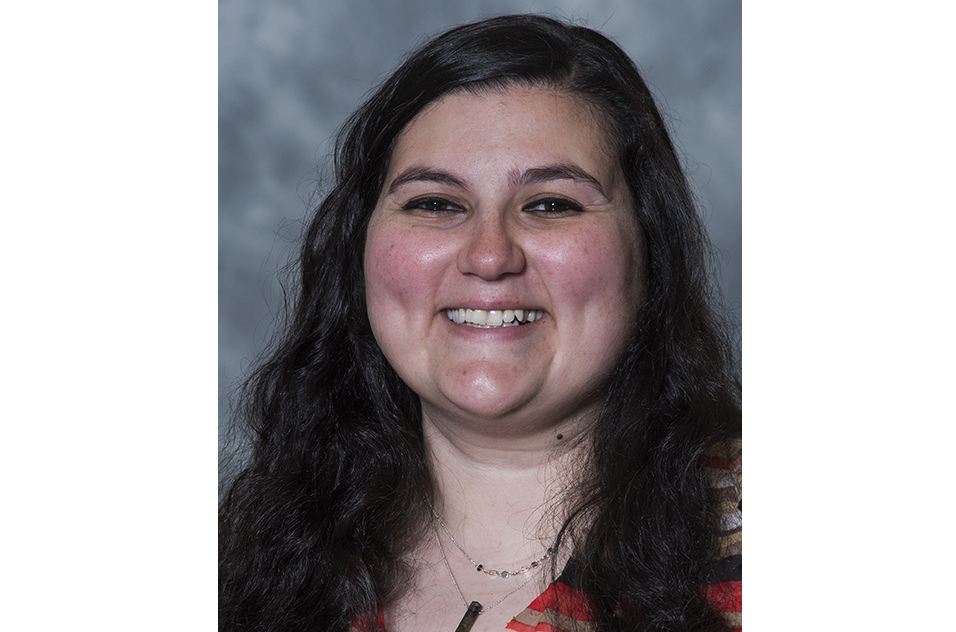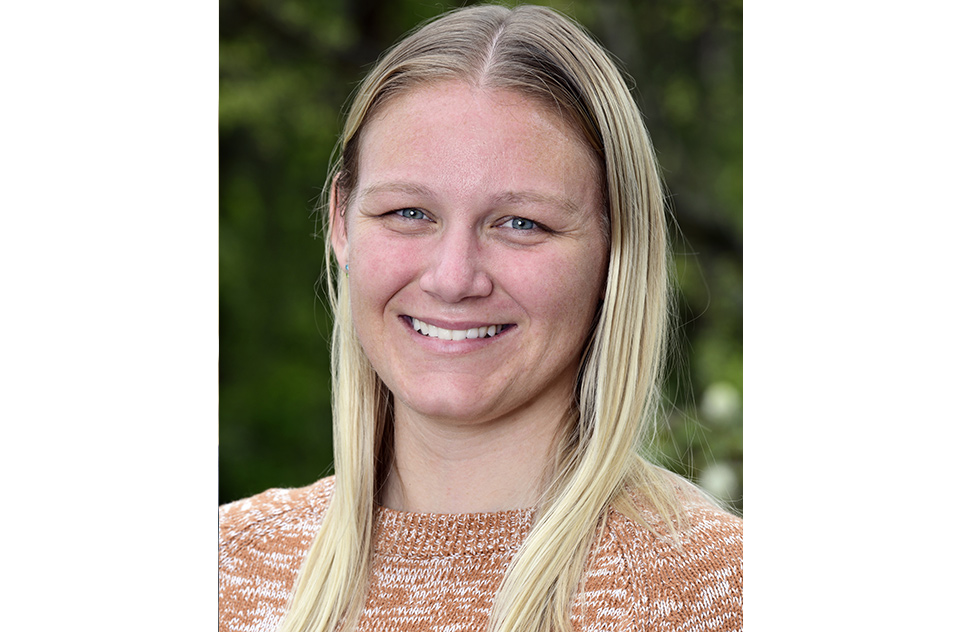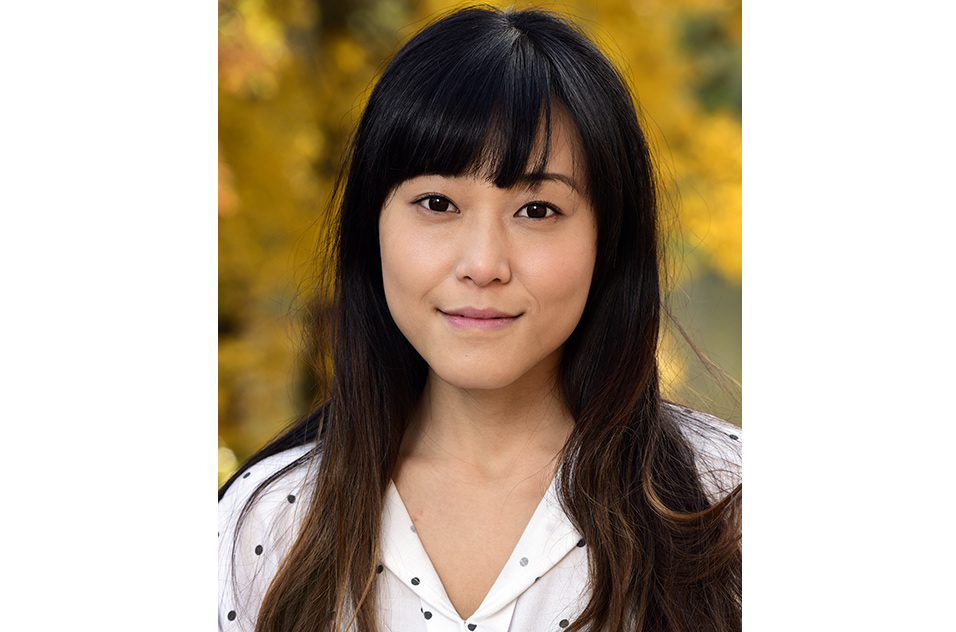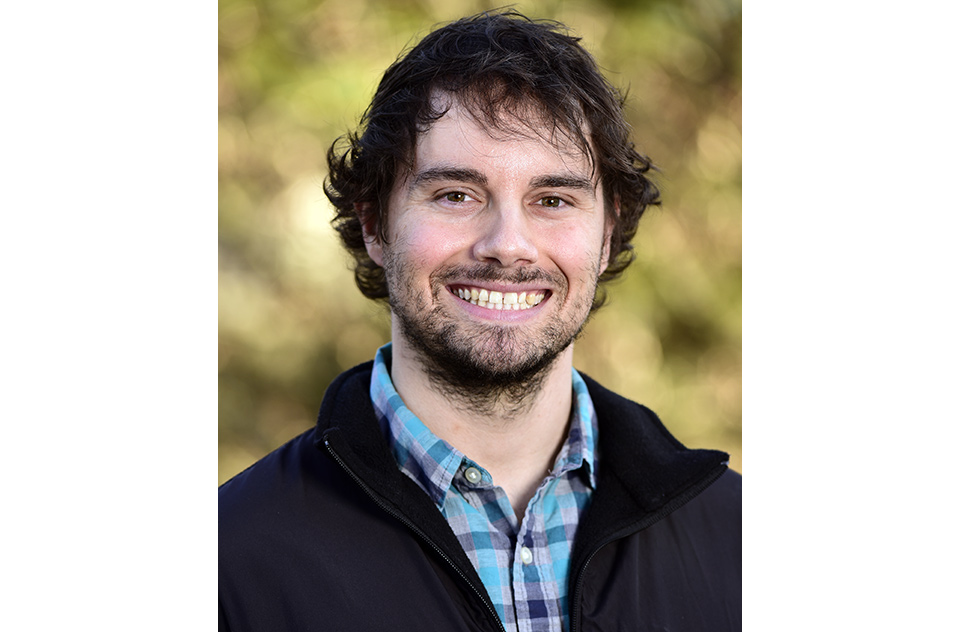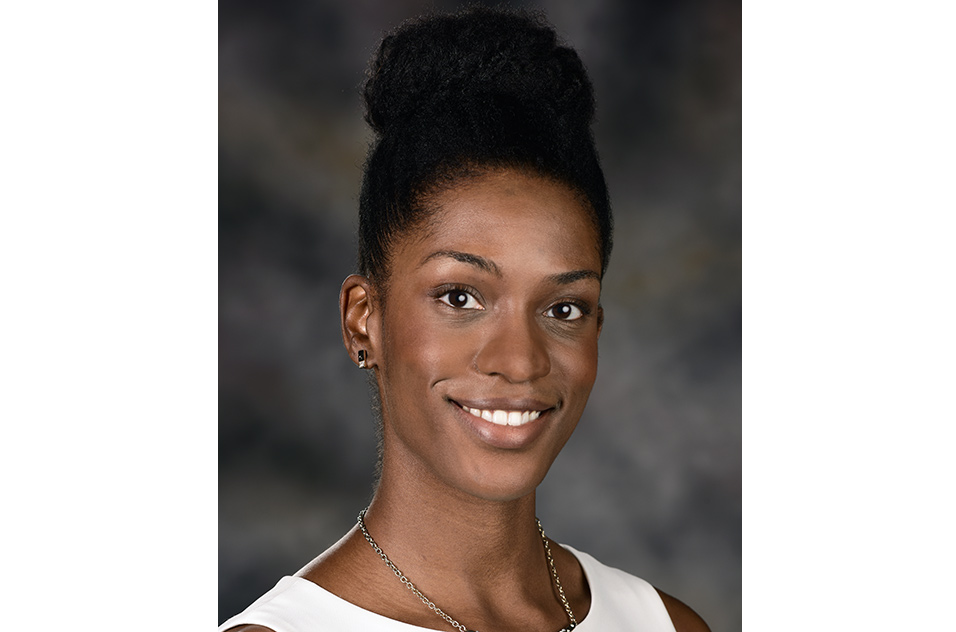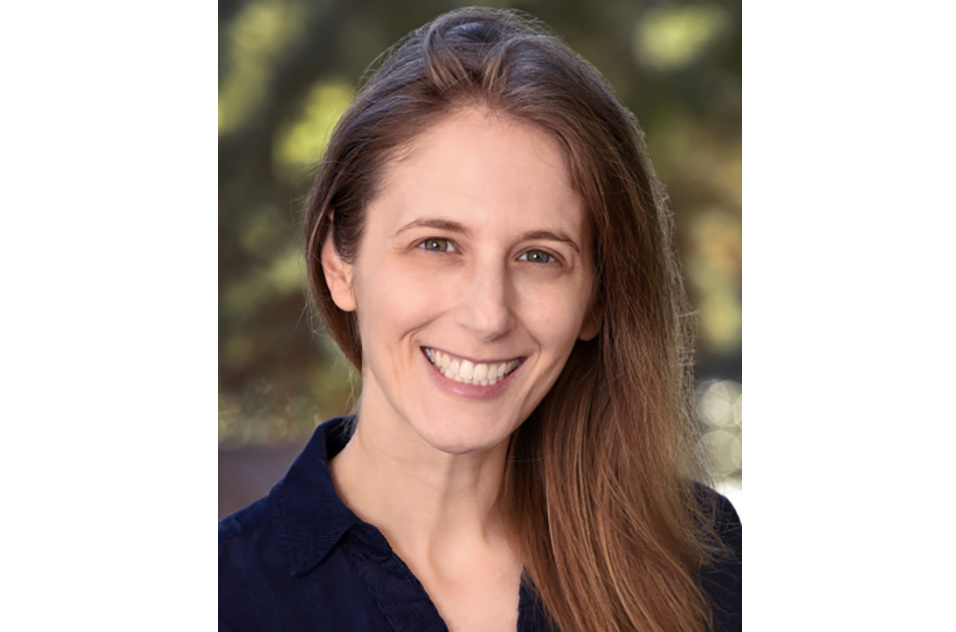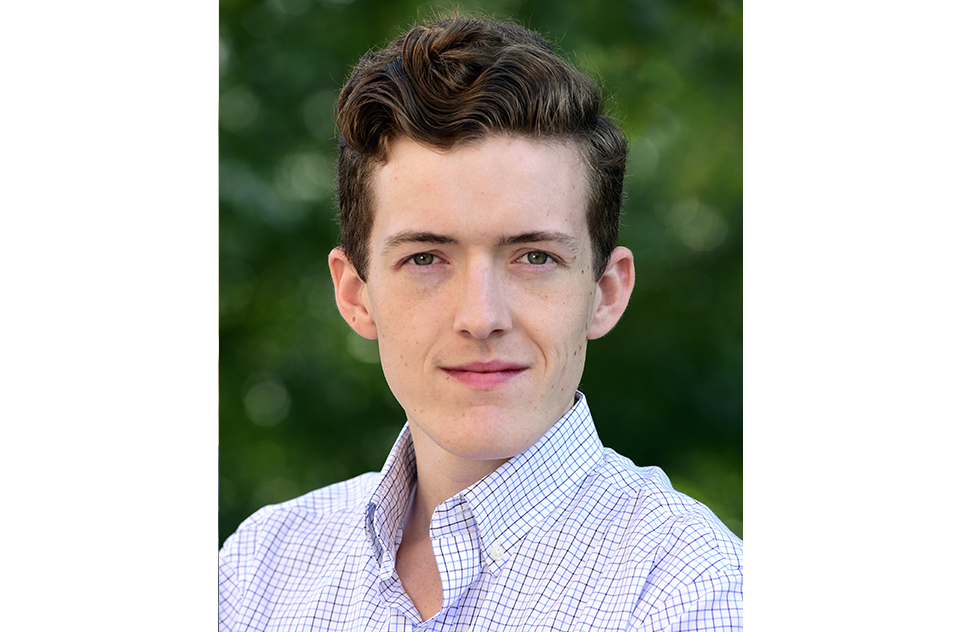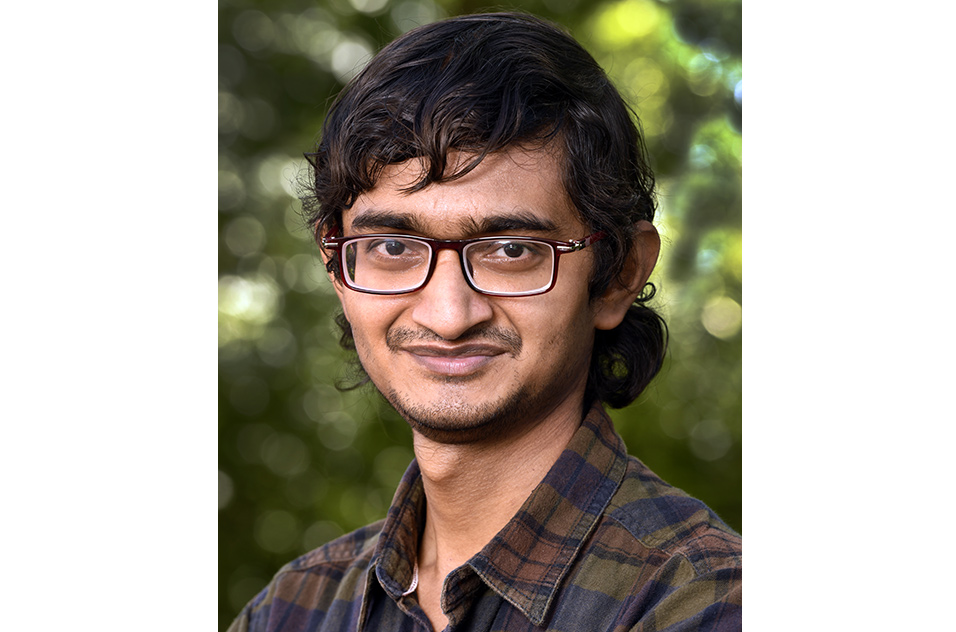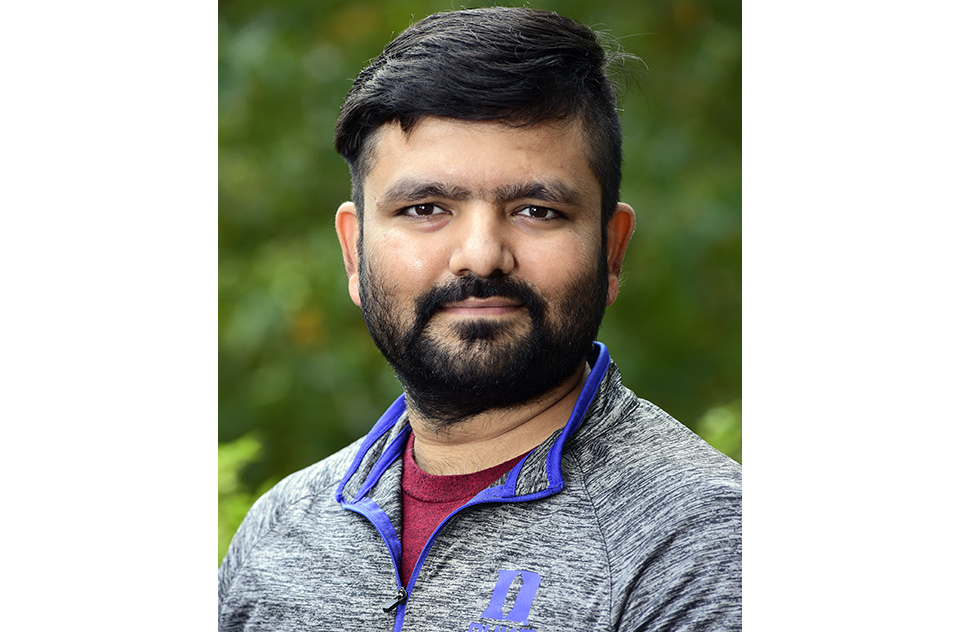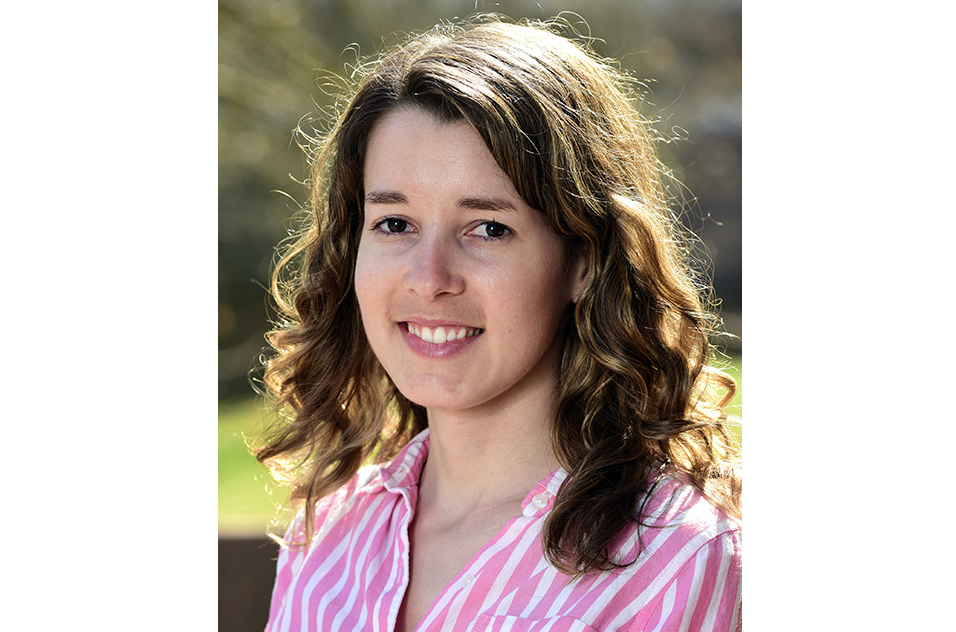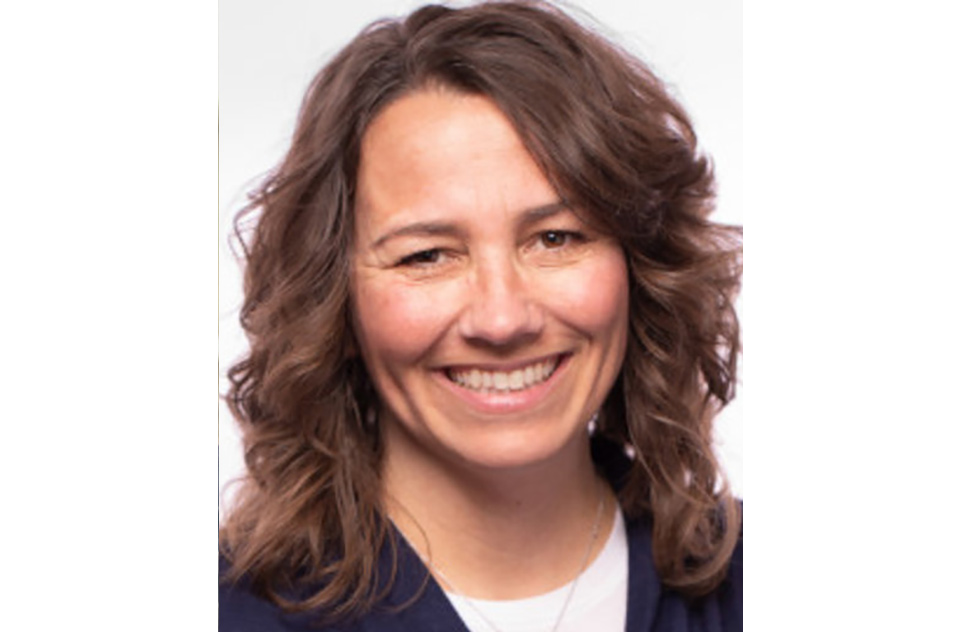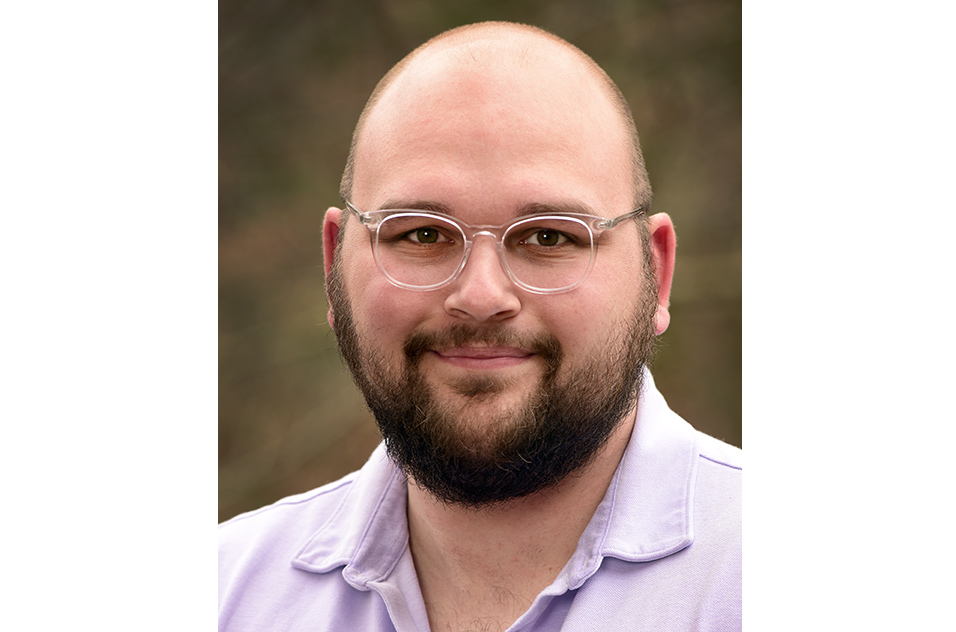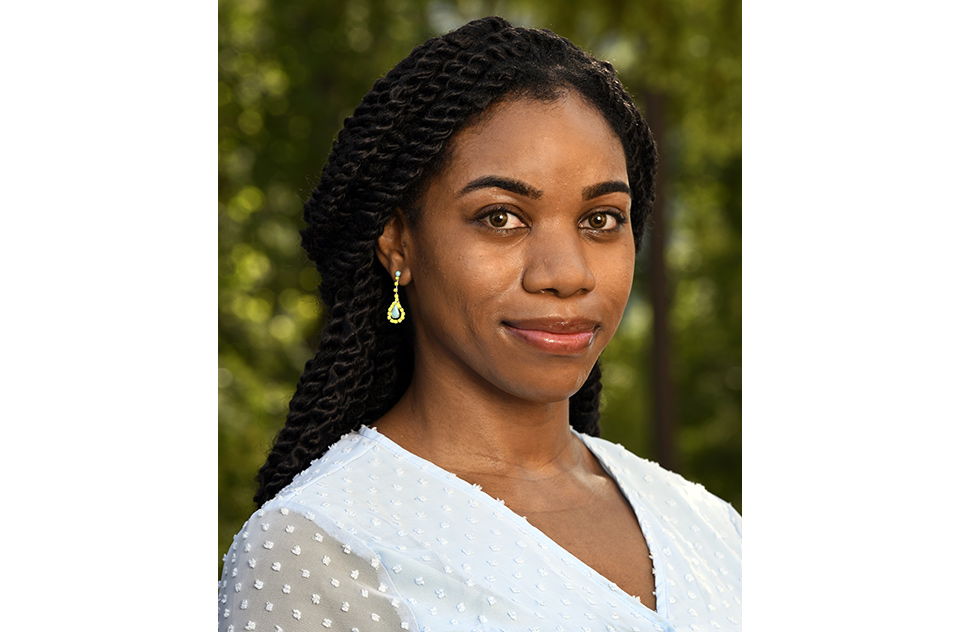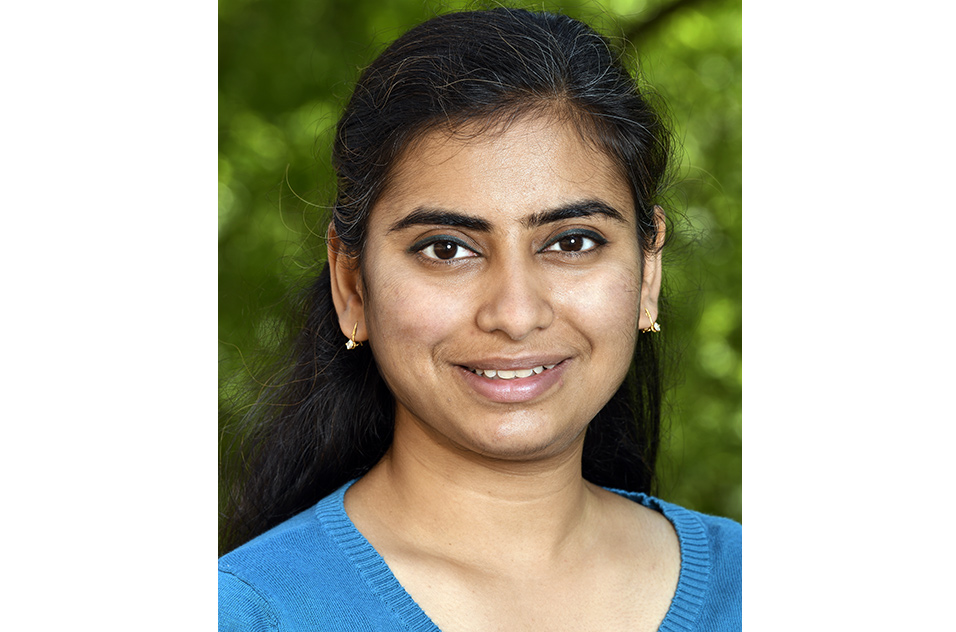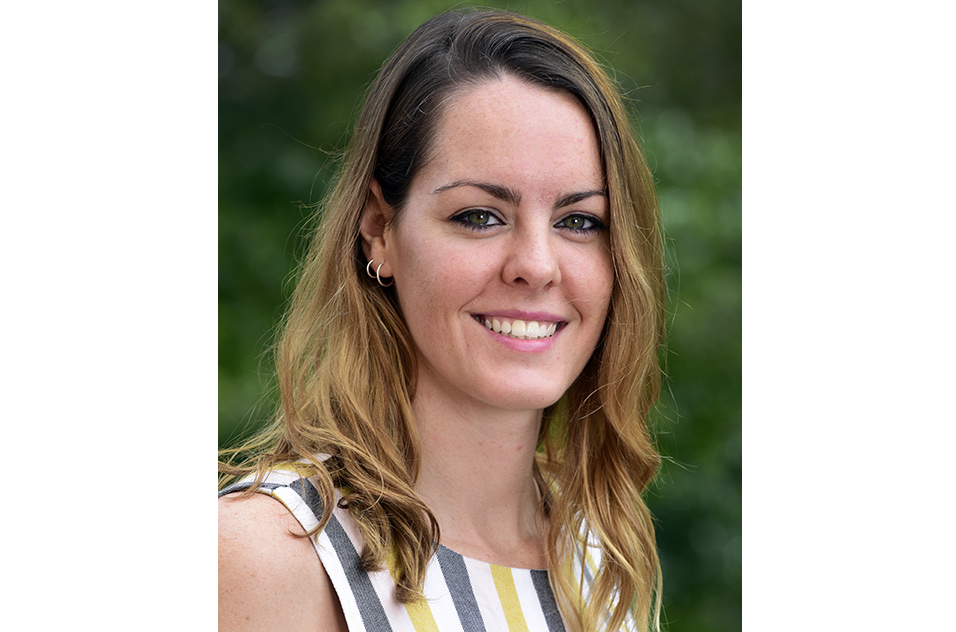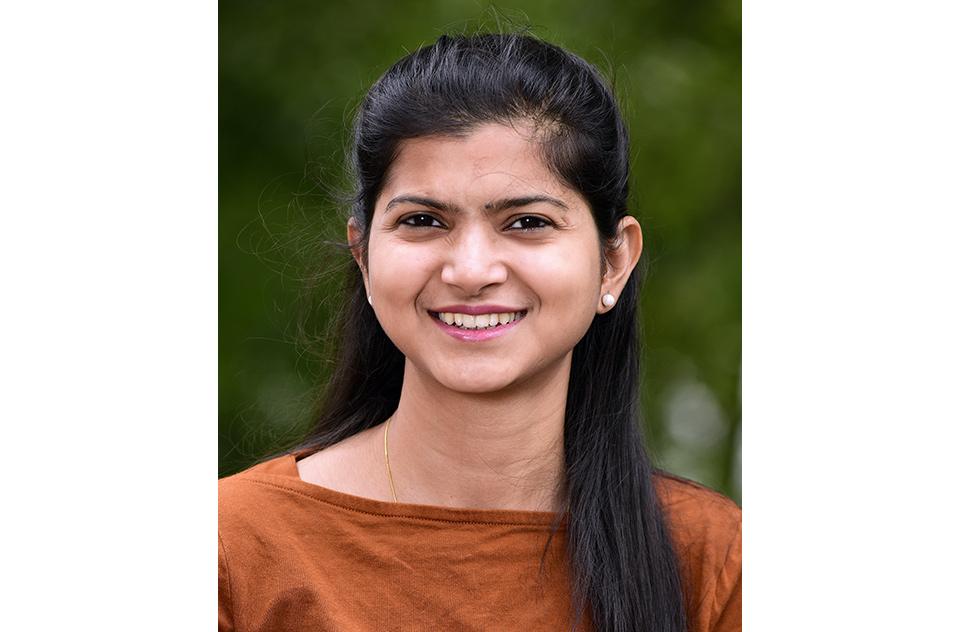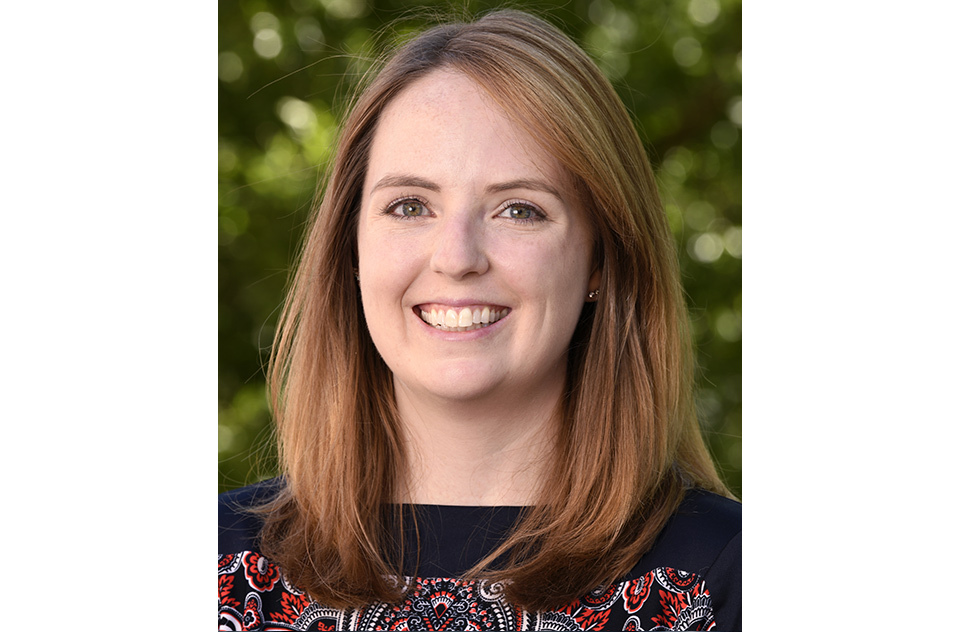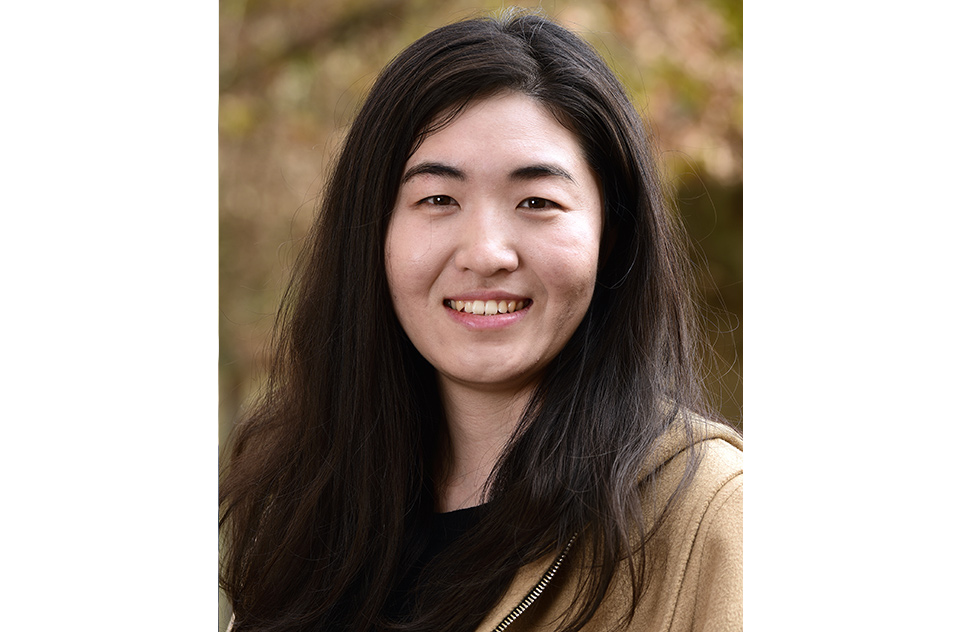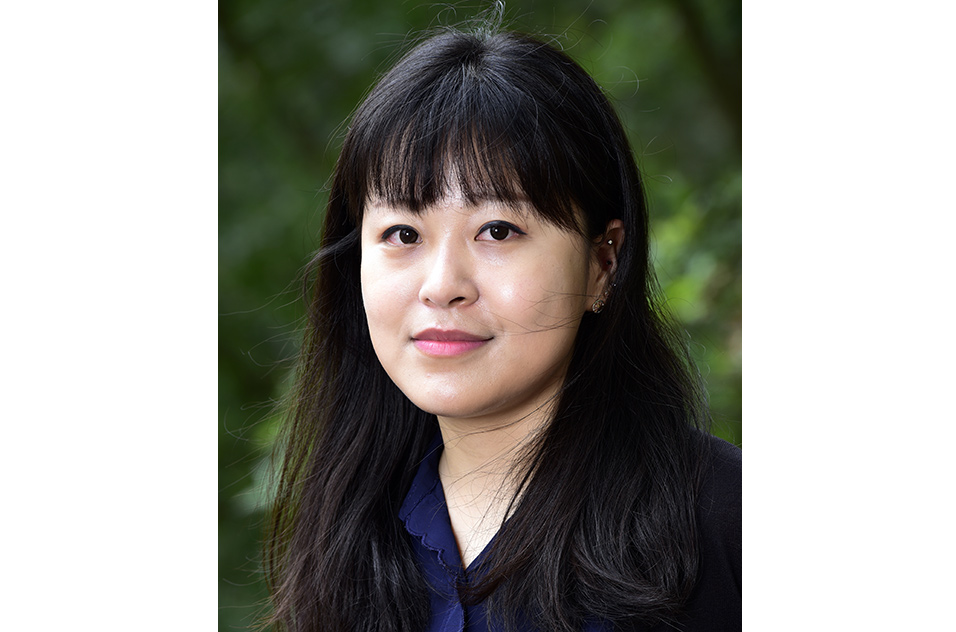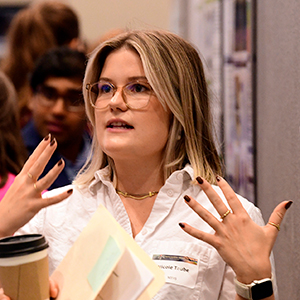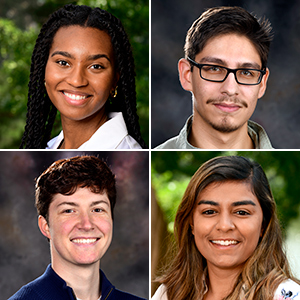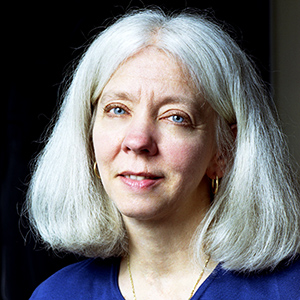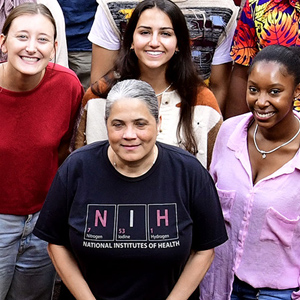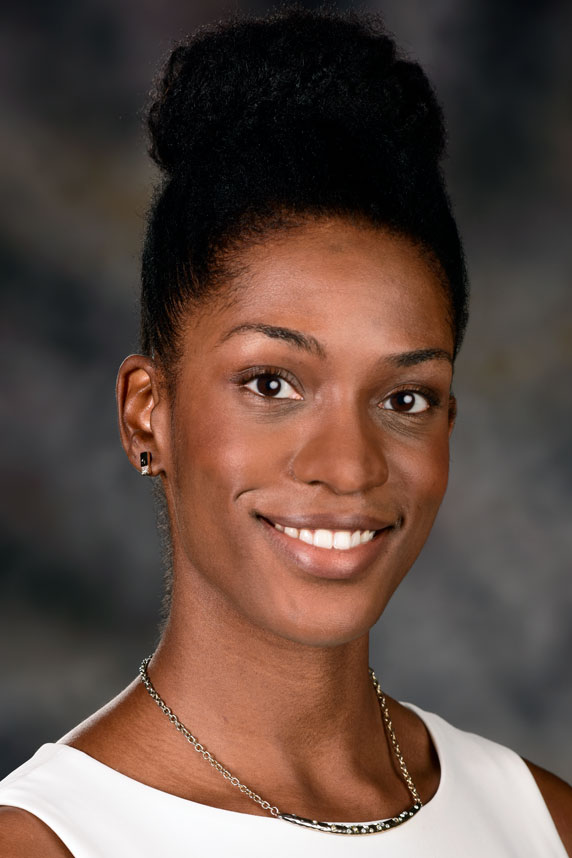 Gaston offered advice to trainees for future FARE competitions. “Ensure that your FARE abstract is on a research topic you are passionate about, consider how innovative methods can help advance research objectives, and appreciate the gift of feedback from a diverse group of collaborators,” she said. (Photo courtesy of Steve McCaw / NIEHS)
Gaston offered advice to trainees for future FARE competitions. “Ensure that your FARE abstract is on a research topic you are passionate about, consider how innovative methods can help advance research objectives, and appreciate the gift of feedback from a diverse group of collaborators,” she said. (Photo courtesy of Steve McCaw / NIEHS)Twenty-two NIEHS trainees were recognized in the Fellows Award for Research Excellence (FARE) competition, which honors outstanding research performed by intramural research fellows across the National Institutes of Health (NIH) and its 27 institutes and centers.
Fellows are judged on scientific merit, originality, method design, and their presentation of written communication in a short abstract. Abstract authors ranked in the top 25% of scores are recognized as FARE winners. Awardees receive a $1,500 professional development award to attend a scientific meeting and present their work.
NIEHS came in first in overall success rate and second only to the National Cancer Institute in number of awardees, according to Darryl Zeldin, M.D., Intramural Research Division scientific director. Each year, NIEHS has been a strong competitor and the number of FARE winners continue to increase (see this list of each year's NIEHS FARE winners).
“Congratulations to all of the FARE awardees and their mentors,” wrote NIEHS Director Rick Woychik, Ph.D., in an email. “This is great news and certainly reflects the high quality of our intramural research environment.”
A range of topics
From artificial intelligence to virology, the FARE2023 competition featured 61 study sections to which trainees could submit. Two NIEHS awardees submitted research to the epidemiology and cultural, social, and behavioral sciences study sections. Dana Alhasan, Ph.D., and Symielle Gaston, Ph.D., — both past FARE winners and both mentored by Chandra Jackson, Ph.D., Stadtman investigator, Social and Environmental Determinants of Health Equity Group — study how racial and socioeconomic disparities are associated with health outcomes.
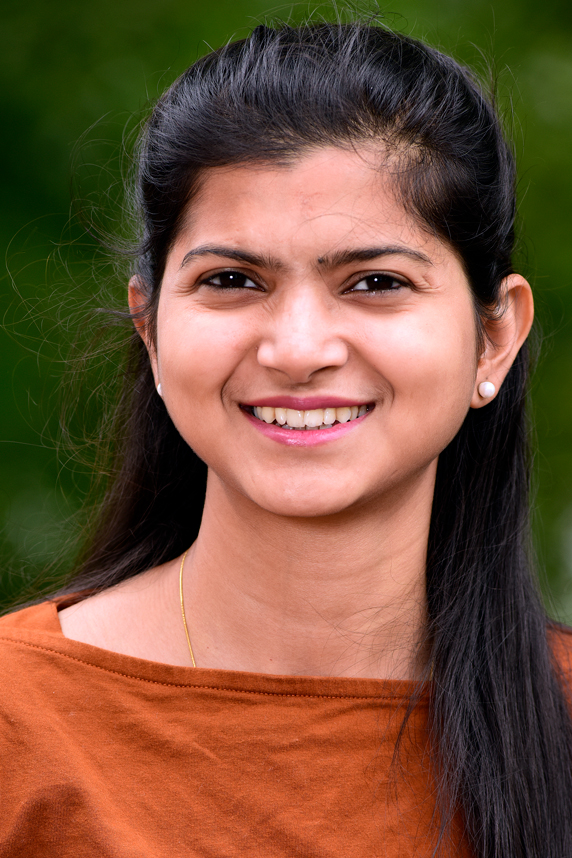 Srivastava is a multi-year winner in the FARE competition. (Photo courtesy of Steve McCaw / NIEHS)
Srivastava is a multi-year winner in the FARE competition. (Photo courtesy of Steve McCaw / NIEHS)Gene-mapping exercises using DNA from a multiethnic cohort were conducted by Jasmine Mack as she examined the genetic propensity for developing gestational hypertension. Mack is a first-year graduate student in the NIH Oxford-Cambridge Scholars Program, placed at NIEHS for two years to work with Alison Motsinger-Reif, Ph.D., chief of the Biostatistics and Computational Biology Branch. Motsinger-Reif also mentors Dillon Lloyd, a second-year bioinformatics graduate student at North Carolina State University, who examined the association of environmental exposures on the development of type 2 diabetes. They found a strong association with asbestos among the Personalized Environment and Genes Study cohort.
Not our first FARES rodeo
Like Alhasan and Gaston, Chitrangda Srivastava, Ph.D., is a multi-year FARE awardee. She works with Anton Jetten, Ph.D., deputy chief of the Immunity, Inflammation, and Disease Laboratory. Srivastava’s research involves a protein discovered in Jetten’s lab named JAZF1, which is associated with metabolism-related health issues such as diabetes and obesity. Srivastava explored the role of JAZF1 in association with bacteria present in the gut microbiome and the development of high fat diet-induced nonalcoholic fatty liver disease, or NAFLD.
“The FARE award is a prestigious award that has been a source of encouragement and motivation in my scientific growth,” Srivastava said. “The FARE award reminds me of a quote by Albert Einstein, ‘The only source of knowledge is experience,’ and these experiences have further helped me in advancing my scientific knowledge and awareness.”
Another family of proteins discovered in Jetten's lab involve a GLI-Similar (GLIS) trio. Awardees Tanushree Mukherjee and Justin Collier, Pharm.D., Ph.D., both research GLIS3, which is associated with polycystic kidney disease (PKD), among other human health concerns. Collier, who also was a FARE awardee last year, is exploring how the enhanced expression of GLIS3 is a potential therapeutic strategy for slowing PKD progression.
Jetten said his job as a mentor is to promote scientific thinking and creativity among his trainees as they become independent scientists. “All three are contributing enormously to these projects and providing their own independent ideas,” he said.
The FARE award is sponsored by the NIH Fellows Committee, the Scientific Directors, and the NIH Office of Intramural Training and Education, and is funded by the Scientific Directors. The FARE competition is an annual event. Registration opens each February.
View the slideshow below to learn more about all 22 NIEHS FARE2023 awardees, their mentors, and the titles of their research abstracts.
(Jennifer Harker, Ph.D., is a technical writer-editor in the NIEHS Office of Communications and Public Liaison.)





